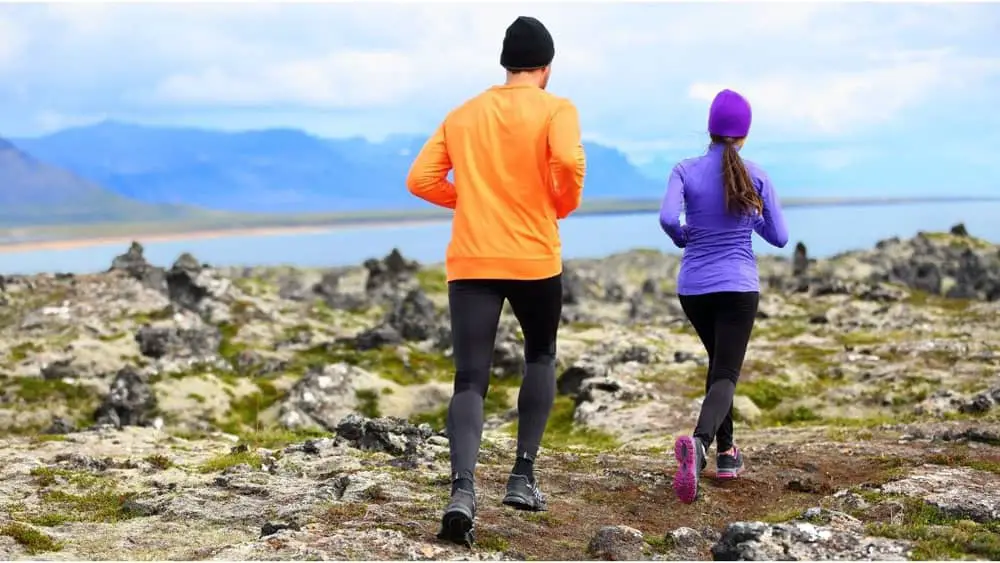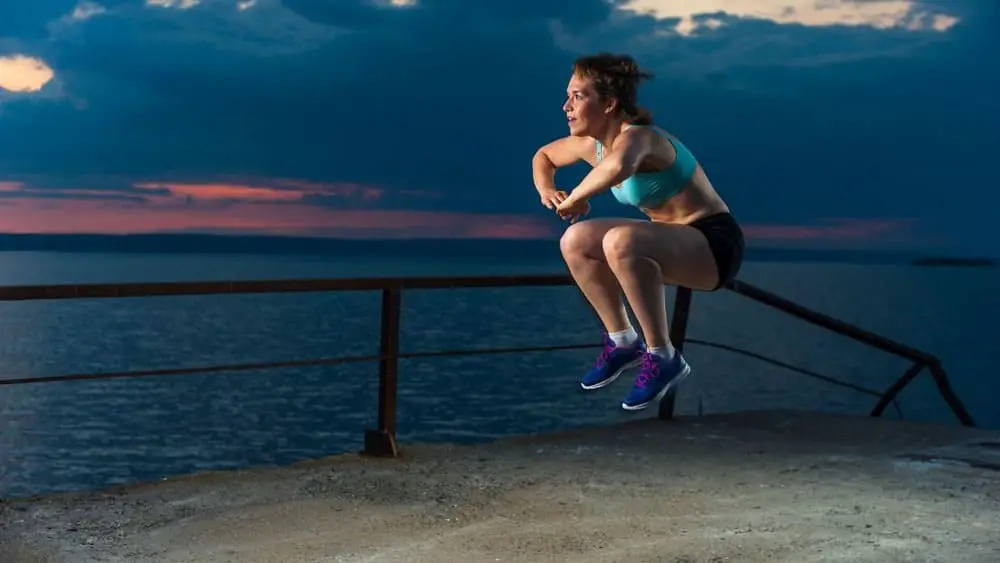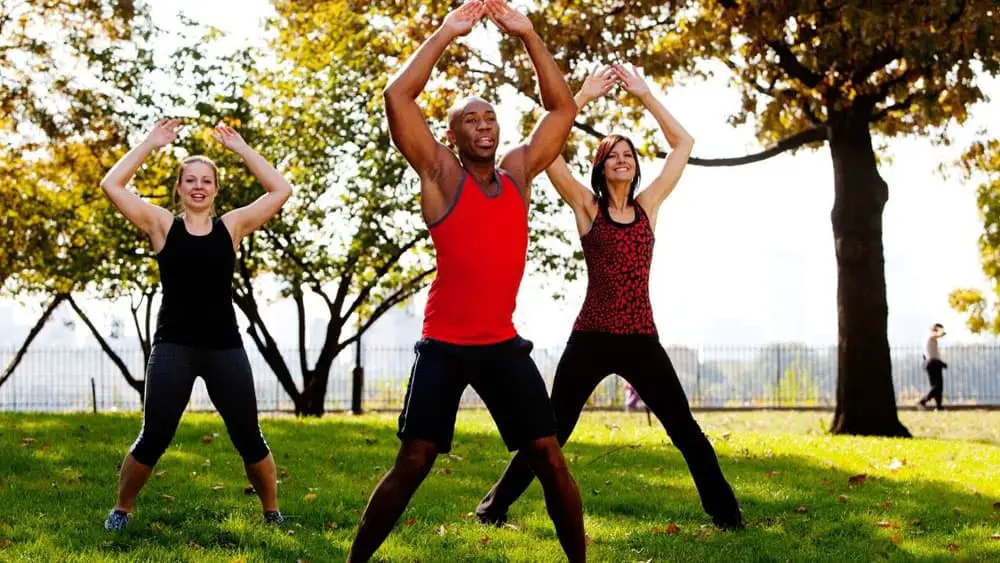
Running has come a long way, be it for fitness, for leisure or for competition, it has developed to be one of the most common activities enjoyed by many.With running becoming more popular than ever, injuries due to running has also become a common scene. And this is something that is experienced not only by beginners but also by seasoned runners.
Though injuries may be normal occurrences in the running community, it does not mean that it cannot be avoided. In order to prevent such things from happening, you simply need to train yourself through exercise in order to strengthen, develop and supplement what part of your body that is lacking, especially those muscle groups present in your lower body.
- SQUATS
- BURPEES W/ JUMP SQUATS
- LUNGES
- STEP UPS
- SIDE SHUFFLES
- SPEED SKATERS
- HEEL RAISES
- LEG RAISES
- PUSH-UPS
- MOUNTAIN CLIMBERS
- GLUTE BRIDGE
- BATTLE ROPES
- DEADLIFT (SINGLE-LEG)
- HIGH KNEES
- JUMPING JACKS
According to a 2015 article from the National Center for Biotechnology Information (NCBI) website, the knees, legs, and feet are the most injury prone body parts for runners. The table below shows the percentage of occurrence for each specific body part:
| BODY PARTS | INJURY OCCURRENCE RATE |
|---|---|
| Knees | 7.2 – 50% |
| Leg – lower | 9.0 – 32.2% |
| Leg – upper | 3.4 – 38.1% |
| Foot | 5.7 – 39.3% |
| Ankles | 3.9 – 16.6% |
| Hips, Pelvis, Groin | 3.3 – 11.5% |
| Lower back | 5.3 – 19.1% |

To learn more about which exercise will help you in enjoying an injury free activity, take some time to scan though the list of recommended exercises provided below:
SQUATS
Target Muscles: Glutes (buttocks), Quadriceps (front thigh), Hamstrings (back thigh), adductor (groin), Hip flexors (hips), Calves
Repetitions and sets: 10-15 Reps x 3 Sets
A vital exercise commonly trained not just by runners but by almost all athletes in every sport. This exercise increases the strength and size of the lower body muscles as well as it develops the core muscles. Squats have a lot of varieties when it comes to execution, trying different squats once in a while can further help your muscles develop and would help you avoid hitting a plateau in your training.
To runners, when lower body muscles are strengthened, overall mobility is enhanced as well as it improves overall flexibility and athleticism resulting in a faster reaction and efficient stride. Proper posture and balance are also improved and maintained, reducing any chances of any back pains.

BURPEES (SQUAT THRUST)
Target Muscles: Hamstrings (back thigh), Quadriceps (front thigh), Hip flexors, Glutes (Buttocks), Calves, Abdominals (Abs), Triceps (Arms), Pictorials (Chest), Deltoids (Shoulders)
Repetitions and sets: 20 Reps (alternate: 60 secs continuous) x 3 Sets
A full body exercise that combines, push-ups, squats and a leap, it is one exercise that should not be missed. A full burpee exercise helps strengthen the muscles in the legs, hips, buttocks, abdomen, arms, chest and shoulders. Due to its execution, it is considered as an aerobic and high intensity exercise.
Burpees helps build a strong stride, burst and overall body endurance. It also improves blood circulation which in turn strengthens the heart and lungs which affects overall cardio enhancement. Getting used to burpees will enable an athlete to develop a sound and constant breathing rhythm, allowing a runner to easily catch his or breathe even after a sudden increase of pace.
Aside from body improvement, burpees also improve foot landing technique, something that most beginner runners are particularly aware off.
LUNGES
Target Muscles: Glutes (buttocks), Quadriceps (front thigh), Hamstrings (back thigh), Calves
Repetitions and sets: 8-12 Reps x 3 Sets (done at each leg)
Lunges are an effective exercise to help sculpt, tone and strengthen your lower body. What makes lunges a preferred exercise by most is due to it having a lot of variations depending which leg muscle you want to further develop.
Through this exercise, overall fitness and athletic performance is enhanced. This is shown in the improvement of mobility and stability when running. Stride length is also increased which can help you run faster. Lunges are also good in developing a weak ankle which is a common desire of every runner.
STEP UPS
Target Muscles: Quadriceps (front thigh), Glutes (buttocks)
Repetitions and sets: 10-15 Reps x 3 Sets (done at each leg)
Step up is a basic exercise which is performed by a simple movement of going up a step or a box. A perfect warm up exercise. Also, it is one of those exercises that can be done anytime and anywhere as long as a platform is available. By simply walking up a stair with proper posture, can be considered as a step-up exercise.
This exercise helps develop balance, posture and overall stability when running, especially during trail and uphill runs. If you are someone who easily loses balance or gets easily tired when running up or down a trail, this exercise is for you.
SIDE SHUFFLES
Target Muscles: Glutes (buttocks), Quadriceps (front thigh), Hamstrings (back thigh), adductor (groin), Hip flexors (hips), Calves
Repetitions and sets: 60 sec side to side x 3 Sets
Side Shuffles is an exercise that targets to strengthen the lower body. It is easy to perform but needs proper posture and execution to get the maximum output.
Considered as an agility exercise, it helps develop reflexes to quickly move in different directions with ease. This exercise is often used by athletes to improve their agility, response time, and body coordination. It also helps with the strengthening of tendons in the ankles to be more stable.

SPEED SKATERS
Target Muscles: Glutes (buttocks), Quadriceps (front thigh), Hamstrings (back thigh), Calves
Repetitions and sets: 20 Reps (alternate: 60 secs continuous) x 3 Sets
An exercise that is effective at building lateral and rotational strength and develops explosiveness. Usually done at the end of every training session as it further pushes the body’s cardiovascular endurance.
When executed properly, this exercise will improve stability in the ankles, knees and hips. It works core strength to maintain balance and upright position when running. Cardiovascular endurance is enhanced while maintaining proper breathing pattern.
All in all, this is the ideal exercise for runners who wish to improve their agility, footwork and speed.
HEEL RAISES
Target Muscles: Calves
Repetitions and sets: 20 Reps x 3 Sets
Usually done when stretching before and after a training session, heel raises help build lower leg and foot muscle strength. Though simple, it is the most effective exercise to develop the calves, giving it strength and size.
With strong calf muscles, stability for the knees and ankle joints are improved thus reducing any chances of injury. To some runners, heel raises enhances the nimbleness of an athlete which is very useful when overtaking a crowd of participants. Even the landing form and technique of the foot on every stride or jump is improved only by doing this exercise.
Not paying attention to proper landing techniques and stride execution is pretty common to beginners but is also observed to some long-time runners. Though it seems harmless at first, its long-term effect is quite undesirable. In the running community, one of the most common causes of runner injuries is due to improper landing strides.
LEG RAISES
Target Muscles: Hip flexors (hips), Abdominals (abs)
Repetitions and sets: 12-15 Reps (alternate: 30 secs continuous) x 3 Sets
Leg raises is an exercise used to strengthen the hips and abdominal muscles by raising the legs while lying down or hanging. It is a simple but challengingly effective exercise normally done at every end of a training session.
This exercise helps in stabilizing the torso for a good posture throughout the race. A good posture is essential in aiding a good breathing pattern which as a result will give a good race performance.
PUSH UPS
Target Muscles: Pectorals (Chest), Triceps (Arms), Deltoids (Shoulders), Abdominals (Abs)
Repetitions and sets: 10-15 Reps x 3 Sets
A popular bodyweight exercise commonly performed to build upper body muscle size and strength. Though it seemed simple to do, it can be ineffective when executed improperly. Thus, always make sure to be mindful of proper posture and execution when doing push ups.
Developing core strength through pushups can contribute to better muscle and joint stability and strength. With a stable body, risks of developing injuries from a repetitive activity like running is reduced. Core strength can also help improve your running posture and stamina by reducing inefficient technique.

MOUNTAIN CLIMBERS
Target Muscles: Pectorals (Chest), Triceps (Arms), Deltoids (Shoulders), Abdominals (Abs), Hip flexors (hips)
Repetitions and sets: 20 Reps (alternate: 60 sec continuous) x 3 Sets
Mountain climbers is a popular body weights exercise which primarily targets the core but would also affect almost all body muscles. Due to it not needing any equipment, it can be performed anywhere. Similar to squats and burpees, every runner should always do this exercise before doing a running session.
This exercise helps improve the cardiovascular system resulting in a strong heart and lungs. When performed on a regular basis, it will teach the core to always be on an “active” mode thus maintaining good body stability, easy breathing and steady but continuous strides. Another thing about mountain climbers is that it also improves your footwork, especially on how your toes are positioned. A good toe position will help prevent any callous or ingrown from developing.
GLUTE BRIDGE
Target Muscles: Glutes (buttocks), Hamstrings (back thigh)
Repetitions and sets: 12-15 Reps x 3 Sets
Another popular exercise which is easy to perform and can be done with or without any equipment. This exercise targets the glutes and hamstring muscles. A good for warm ups exercise still can be done as a cool down exercise.
A well-developed glute can aid for a good body posture when you run. This will help you to keep your legs, pelvis and torso aligned when you run, boosting your stability and therefore your running efficiency.
BATTLE ROPES
Target Muscles: Pectorals (Chest), Triceps (Arms), Deltoids (Shoulders), Abdominals (Abs), Hip flexors (hips), Hamstrings (back thigh), Quadriceps (front thigh)
Repetitions and sets: 60 sec nonstop x 3 Sets
Always assumed to only target the arms, this exercise can actually do more. Battle ropes exercise is a new trend exercise which targets pretty much the whole body. It is a full body strength training exercise which also includes cardio. What makes this exercise a favorite for almost all athletes is due to it having a lot of diversity in its execution. Switching to one form of battle rope exercise to another is easy and can be done during the actual execution.
Regular training on this exercise can fully improve core strength and stability. To most runners, this exercise helps them in strengthening their strides, fixing their form as well as allowing them to run faster. Considered as a high intensity exercise, cardio and stamina is improved, thus enabling a runner to burst up during runs.
DEADLIFT (SINGLE-LEG)
Target Muscles: Hamstrings (back thigh), Quadriceps (front thigh), Hip flexors, Glutes (buttocks), Calves, Abdominals (abs), Flexors (forearms)
Repetitions and sets: 10-15 Reps x 3 Sets
Single leg deadlift is an exercise which strengthens the back, core and legs. A variation of the traditional deadlift involving only one leg when doing the exercise. Proper form and execution are vital in performing this exercise to make sure that you are getting the most out of it.
By strengthening the glutes and hamstrings, running power is increased at the same time overall stability is improved thus reducing the risk of injury. Aside from the leg muscles, deadlifts also stretch the leg tendons enabling them to strengthen as well.
Once perfected, focus and balance will no longer be an issue. Awareness of your lower body especially to your foot will also increase, helping you know if you are doing good or if you need to stop and rest in order to avoid potentially risking yourself to injuries.

HIGH KNEES
Target Muscles: Quadriceps (front thigh), Glutes (buttocks), Calves, Abdominals (abs)
Repetitions and sets: 60 sec nonstop x 3 Sets
High knees is a cardio exercise usually performed during warm up or cooldowns. It activates the core, strengthens the lower body muscles, improves momentum and gets the heart rate up. Though a simple exercise, it is extremely versatile and it packs a lot of benefits to an athlete. Due to its versatility, it helps improve flexibility, running pace and endurance, while also strengthening your hip muscles for added stability.
To runners wanting to enhance their race performance, this is a perfect exercise to add to your training routine. It ensures an adequate cardiovascular workout and improves your speed, strength, and flexibility more easily than any other exercise. Momentum when you push your feet off the ground is increased as well as the explosive power of your legs.
JUMPING JACKS
Target Muscles: Hamstrings (back thigh), Quadriceps (front thigh), Hip flexors, Glutes (Buttocks), Calves, Abdominals (Abs), Deltoids (Shoulders)
Repetitions and sets: 60 sec nonstop x 3 Sets
Jumping jacks have been around the sporting community for a long time, the fact that it has stayed as the “go-to” warm up exercise pretty much reflects its effectiveness. Even at high intensity interval training workouts, it has become an integral part being incorporated at various routines.
It is a great workout, similar to high knees where it gets the cardiovascular system going, thus improving stamina. Aside from stamina, it also helps with the development and maintenance of balance. The overall body activity enables the increase of heart rate and blood flow stimulation which is beneficial in activating your muscles thus maximizing its performance.
Due to the jumping motion that is present in jumping jacks, the bones and tendons within the legs and feet are developed giving it strength and durability. Strong bones and tendons are essential in long distance races and in sprint races.
Strong muscles should be complemented with strong bones to give it the expected boost that a runner always hopes for.
TOP TAKEAWAYS
Hand in hand with exercising are other factors to avoid getting from injuries. Proper warm ups, cooldowns, stretching and nutrition are also vital and these have been proven to play a major role in the health of a runner. These things should not be taken for granted or ignored, be it during training or during actual competitions. It will just be a waste if after all the time and effort you spent training and exercising, you were not able to perform your best just because you lacked proper nutrition. Or that despite the strong start in a race, you were not able to finish due to a muscle cramp as a result of ignoring to do a minute or town off warm ups and stretching.
Running is not just about racing; it should also be complemented with other exercises in order to be maximized. Not all is aware about this, even those who have been doing the sport for a long time. Some of them think that other exercises are not needed until, of course, injuries have already developed in their bodies. Some of these injuries don’t just happen, most running injuries manifest in a long period of time and after many distances of running.
Reference:

